Posted by Bob Martin on January 4th, 2007
For some of us, resolving a painting is more difficult then it should be. Once started, I am not able to see what I am doing with a clean mind. There are elements that I fall in love with a try to work around them, but never seem to get the entire painting to work. Recently I discovered that a painting that was testing my identity as an artist (another way saying, gave me great doubts about my ability) only needed for my scrape out the one thing that I thought was working for me, in order for the the rest of the painting to come alive.
Occasionally or almost always, the paintings become overworked. Knowing when to stop is a good thing. I have tried all of the little tricks you can use to play with your mind, like hiding the painting in a closet for a week, the black mirror, turning it upside down etc. Anybody have any other ideas?
Posted by Karl Zipser on December 30th, 2006

Painting From Life vs. From Photos
Hanneke can’t post today and she asked me to fill in for her. I wanted to remark on an interesting trend in some of the comments about her work. For example, looking at an image of Old grapes, new painting, Colin Jago wrote “I seem to be looking down on the grapes and up at the glass.”
For Colorful Underpainting, Steve wrote “my first impression was that the cloth was somehow mounted on a wall. The bunch of grapes and the way they rest on it make this interpretation virtually impossible, of course, but I still don’t feel the correct perspective as strongly as I would like to.”
Hanneke paints her still life paintings “from life” and she tries to paint what she sees. Is she trying to show multiple viewpoints, or to produce distortion in perspective? Not intentionally, she has said. But is she doing so unintentionally?
Let’s take a look at Hanneke’s imaginary still life drawing and see if can find out more about the viewpoint issue.

In this imaginary still-life, the vessel is seen directly from the side, but the table top and fruit are seen from a different perspective, from above. We seem to look down on the table top while looking at the vessel from the side. This merging of different perspective points lends an interesting quality to the imaginary drawings. More examples of her “multiple viewpoint” imaginary drawings are here, here and here.
Let’s compare this to a drawing made directly from a real still life the same week when she made the imaginary drawings:

Do you see the difference? In this drawing from a real still-life, multiple viewpoints are not manifest. The fruit and the vessel are both seen from the same viewpoint.
I think that Colin and Steve are on to something with their comments about Hanneke’s painted still life work. In the “from life” still life paintings, the perspective may be technically correct, but she sometimes manages to produce a feeling of different viewpoints nonetheless. Would it be interesting if she tried to bring this difference in viewpoints more explicitly into her “from life” still life paintings? Or, should she work to correct the apparent flaw when it occurs?
Posted by Rex Crockett on December 29th, 2006
I’m not sure that this post will be very interesting or useful to anyone here since it seems that what I do, artwise, is not something anyone else does. I have not even heard any aspirations in the direction of classical figure drawing either, but here, nevertheless, is a quick synopsis of my method.
I decided to attempt to recover some of my earlier methods in order to illustrate the story, but lacking pastels for the moment and furthermore basically despising using the computer to simulate the effects, I recovered only certain aspects of the earlier style — mainly a sense of dynamic motion and form. If you’d like to see some more, you can have a look at the non romantic exposé of my penultimate post. I lacked the time before, but this past week and a half, I’ve done nothing but make time and pick up the pace, so here’s my first recent blush at a classical theme in a long time — the fight between Heraklos and Antaeus.
more… »
Posted by Karl Zipser on December 25th, 2006
Françesca’s fifth birthday is coming up in March.
Karl: Who do you want to see your drawings?
Fran: All the people from the whole world, and also grandma and grandpa.
more… »
Posted by Rex Crockett on December 23rd, 2006
Saturday morning, eight am, and still no post ready.
I have a good reason: I’ve been too busy drawing to write; moreover, I certainly have little time or patience for image manipulation with a computer.

more… »
Posted by Hanneke van Oosterhout on December 23rd, 2006
Many people think of underpainting as a working in monochrome — either in grays, or browns. Artists of the past like Jan van Eyck used very colorful underpaintings. The usefulness of this I see in my painting of grapes.
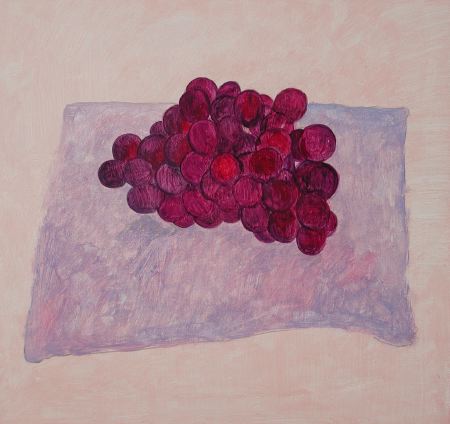
I was painting these grapes from some dark purple-blue grapes in my studio. I made the underpainting much more bright, and warm, than real grapes, as you can see in the picture above.
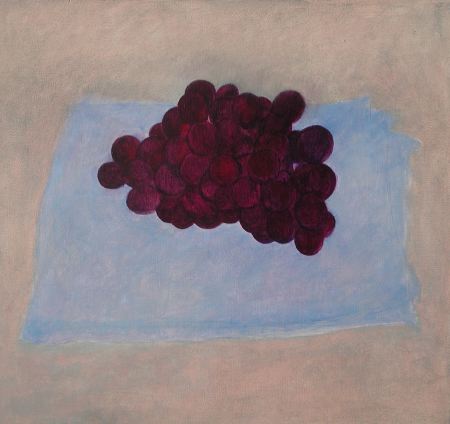
When the first layer of oil paint was dry, I began overpainting, putting darker shadows over the grapes to make the colors more realistic, darker and cooler, as you can see above.
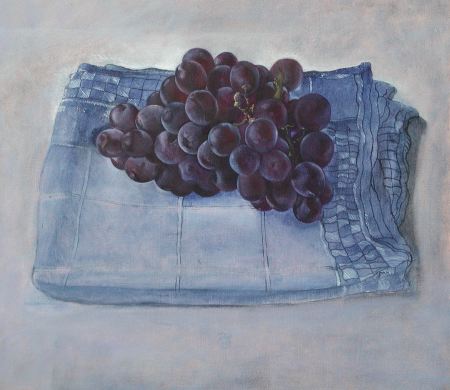
Here I have gone further with overpainting in another session. Now the grapes have a realistic color, but the brightness of the underpainting color shows through and gives life to the colors. If I had started with dark gray grapes, instead of a colorful underpainting, the colors would be dead when I did the overpainting. This this picture is not quite finished in the cloth. Here is where I left it yesterday afternoon.
Any suggestions?
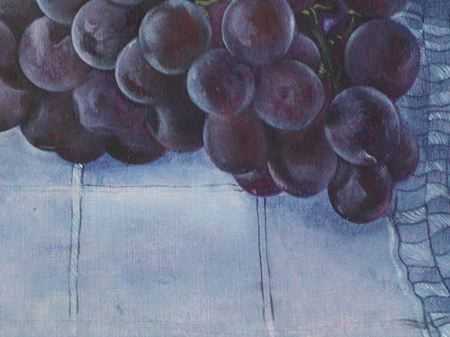
(detail requested by Steve)
Posted by Karl Zipser on December 21st, 2006
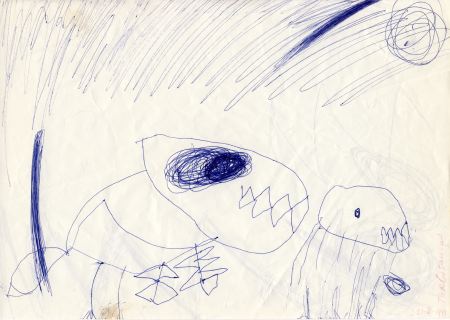
Not long ago, Françesca enjoyed typing random letters into a text editor for about ten minutes a day. Now that she is nearing five years old, that doesn’t satisfy her any longer. She learned how to use the mouse, and she’s beginning to understand how to use the Safari web browser. She can spend an hour on-line without a break.What to do? This is the point where Hanneke and I have a choice. We can take the computer away and have our kids grow up in a “traditional” pre-internet household. Or we can let them go online and accept the consequences.
I am of two minds about this. One view is that the kids should be able to grow up in an internet-free home, the way we grew up. The opposing view is that the kids should go online because the internet is part of the world we live in — keeping the kids away from it would be like refusing to let them learn to read or write.
I am torn between these two views, but I am leaning toward letting her go online because:
- Our kids will come into contact with the internet no matter what we do.
- By guiding her internet use at home, we can help Fran find and be involved in the positive things on the internet; for example, looking at artwork by other children her age.
- The internet is intensely stimulating, of course. My response is that we need to make our “off-line” home environment even more fun, more stimulating, so that the internet is not such a magnet for the kids.
Anyone else out there with similar problems / opportunities?








